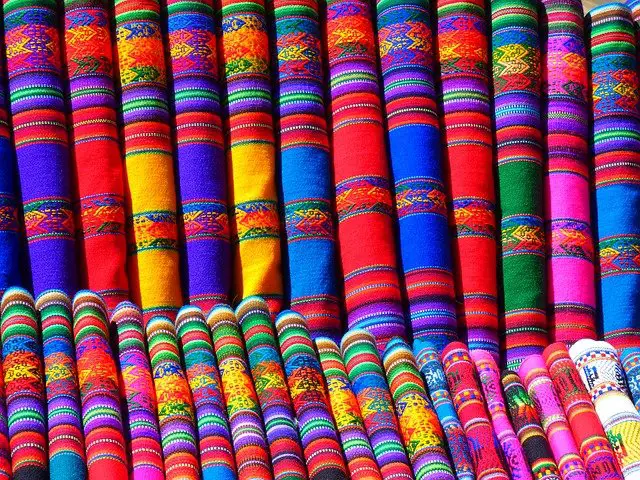Hardly anyone needs an introduction to the term “fabric”. We use it in our everyday language even though most of us barely have any formal knowledge on it.
We know fabric as clothes we wear, items slapped on the body of our trainers and sheeting such as comforters and casings. We also know, to some extent, the properties of fabrics which is why we’re able to discern which clothes to wear in certain periods of the year.
In this article, we’ll build on our cramped knowledge of fabrics and learn exactly what it is, how it’s made, the types, classes and of course the properties and uses of each class of fabric, as it exists in many variances. Hopefully, you’ll be able to make better choices regarding the option of fabrics moving on.
What is a fabric?
A fabric is a collection of fibers aligned or pressed together using various techniques to form a continuous material. Two categories of fabrics exist, those formed using procedures than involve intertwining and interlacing fibers (woven fabrics) and those formed by matting fibers together using heat, pressure and moisture; felting (non-woven fabrics).
At the very basic, a woven fabric is composed of fibers (hair like substances) spun into yarns which are continuous strands of textile fibers and yarns interlaced at right angles or interloped to form a continuous stretch of material called fabric.
Fibers need to be spun into yarns because they are short and brittle at their very basic nature. So a continuous stretch of material will ensure fabrics to be used for various purposes can be derived from them.
The degree of twisting (or spinning) fibers together to form yarns influences the finess of the resulting fabric, its strength, elasticity, absorbency and luster, alongside the very nature of the fabric itself.
Higher twist per inch results in a finer, stronger, elastic, less absorbent and reduced luster of the final fabric.
There are different techniques for turning yarns into fabrics, they include weaving (interlacing), knitting (interloping) and felting (entanglement of yarns under pressure).
Types of Fabrics
The fibers that make up a fabric can be natural or manmade with natural fibers derived from natural sources or geological processes such as plants, animals and asbestos, whereas manmade fabrics are derived from chemical processes.
It’s good to note that some fibers are derived naturally longer than others. And thus a nomenclature distinction exists between them as follows:
- Staple fibers : short one
- Filament fibers: Long ones.
The length of fiber is a useful quantity that influences the quality of the fiber obtained in the end. It’s carefully considered alongside a host of other things such as processing techniques during fabric manufacture.
Natural fibers
Natural fibers are derived from natural sources. These include:
- Byproducts of animals such as hair and secretions. These are known as protein fibers.
- Parts of plants such as seeds, fruits, stems and leaves. These are known as cellulosic fibers.
- Earth: Asbestos. These are called mineral fibers.
Below are the most popular types of natural fibers from their various natural sources.
Protein Fibers:
Wool:
Almost everybody is family with wool and a good majority of us have possessed and used one form of wool product or the other in the course of our life. Wool is one the archaic elements of the fibers world as it was long used to make fibers and turn them into fabrics for clothing and other purposes.
Wool is derived from the hair of animals such as sheep, and the best of wool derived from sheep is from the breed of domestic sheep called the Merino which appears with qualities such as fineness, softness, decent length, bulk and strength. The Merino sheep has its wool continuously growing and has to be spun at least once in a year otherwise it can cause distress to the animal either in the form of heat, mobility or blindness.
Wool has the following properties:
- It traps heat by virtue of the crimp nature in its structure which provides warmth for the user.
- Wool is a very weak fabric that gets even weaker when immersed in water.
- Wool has scales on its surface which makes it prone to shrinkage and loss of shape upon the application of agitation like that seen in the washer.
- Wool is elastic
- Wool fabrics have greater bulk than other textiles because of the crimp on their fibers.
- Wool can absorb 1/3 of its weight in water.
- Wool can cause allergic reaction in people.
- Wool can be damaged by pests such as beetles.
- Wool is best dry cleaned as too much scrubbing can damage the fabric.
- Pure wool is sensitive to strong soaps, detergents, and rough agitation of the washer, and can be destroyed in form of shrinkage or wear by them. Refined or treated wool however can be made to overcome all these limitations to a degree.
Wool is used in the making of the following:
- Blankets
- Horse rugs
- Saddle cloths
- Carpeting
- Upholstery
Silk:
The supposed discovery of silk was purely accidental, but one the world is forever grateful for as silk would go on to become a very useful raw material for the production of different types of goods.
A Chinese princess was having a cup of hot tea under a mulberry tree when she witnessed a cocoon drop inside her cup. Out of frustration, the princess tried to remove the foreign item from her cup when she unravelled a continuous strand of item. Mimicking the details and conditions of the event, workshops of Chinese origins produced the silk which today has widespread uses in the apparel industry.
Silk is derived from the cocoons of insect larvae, the best of which is derived from the coccons of the larvae of the mulberry silkworm, having good properties such as high degree of shimmer, better texture and better lustre.
Silk has the following properties
- Silk has a natural sheen
- Silk has a smooth and soft texture.
- Silk isn’t slippery.
- Silk is strong but can lose about 20 percent of its strength when wet.
- Silk hardly regains back its shape after stretching.
- Silk can be damaged by sunlight.
- Silk can be attacked by insects
- Silk can cling
- Silk cannot be bleached.
Silk is used in the following ways:
- Furniture
- Parachutes
- Bicycle tires
- Pajamas, robes, suits etc.
Other protein fibers include: Cashmere, mohair, alpaca hair, horse hair etc.
Cellulosic Fibers
Cotton:
Cotton is obtained from the seeds of cotton plants in the mallow family. It a strong and durable fiber with a moderate cost. It has a low luster, good strength, and good heat conductivity which makes it a good option during summer. Cotton is used in the manufacture of robes, towels, jeans, underwear and socks. One big disadvantage of cotton clothes is that they wrinkle easily and can be attacked by pests such as insects and mildew.
Flax or Linen:
Flax fibers are obtained from the stem of the flax plant and are typically sturdier than cotton fibers although less elastic. They appear straight and are soft to the touch having flexibly to their structure. Flax fibers are used in the production of textile products such as sheeting, underwear and lace.
Hemp:
Hemp is obtained from the stem of the hem plant. They are typically blended with other fibers to make woven fabrics.
Jute:
Jute fiber is obtained from flowering plants of the tropics and subtropics and is affordable. Jute fiber is long and uniform and is typically blended with other fibers to make ropes and twines. It has a shiny appearance. It is used in the manufacture of archaic clothing used for movies.
Sisal:
Sisal fiber is derived from flowering plants and just like jute fiber, is used for making ropes and twines among other things.
Manmade Fibers
Manmade fibers are derived from artificial sources which involves chemical processes. These processes produces materials that are used or processed as fibers themselves. Manmade fibres have varying properties just like natural fibers and may be superior or inferior in certain respects.
Below are the most popular types of manmade fibers.
- Nylon:
- Lyocell
- Rayon
- Polyester
- Spandex
- Acrycil
Embroidery on Fabrics
Fabric is the result of spinning fibers into yarns and interlacing yarns at right angles using decorative techniques to form it. After a fabric has been made, it can be further processed using techniques like embroidery to improve its aesthetic value.
Embroidery adds surface ornamentation to a fabric and several types of it’s stiches exist each with its own advantages and disadvantages. Examples of embroidery stitches include the chain stich, fly stich and stem stich.
Dying and Printing Fabrics
Aside embroidery, other procedures for enhancing the overall aesthetics of a fabric is dying and printing. This involves coloring the fiber (typically in stylish patterns) using coloring solutions to form beautiful patterns. Printing is simply innovative dying.
Conclusion
A fabric, at its core, is made up of fibers that are joined together using several techniques like felting or spinning and interlacing. On their own, these fibers do not have the strength to be spun into fabrics, thus the need to convert them to much stronger yarns before interlacing, felting or knitting to form fabric.
Different types of fabrics exists based on the type of the base fiber. Natural fibers are derived from natural sources and they include wool and silk, whereas manmade fibers are derived from chemical processes and they include linen, acrylic, polyester and nylon.

